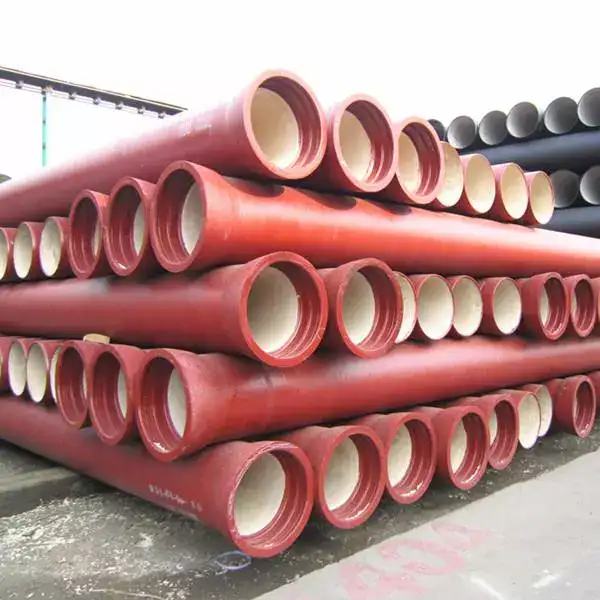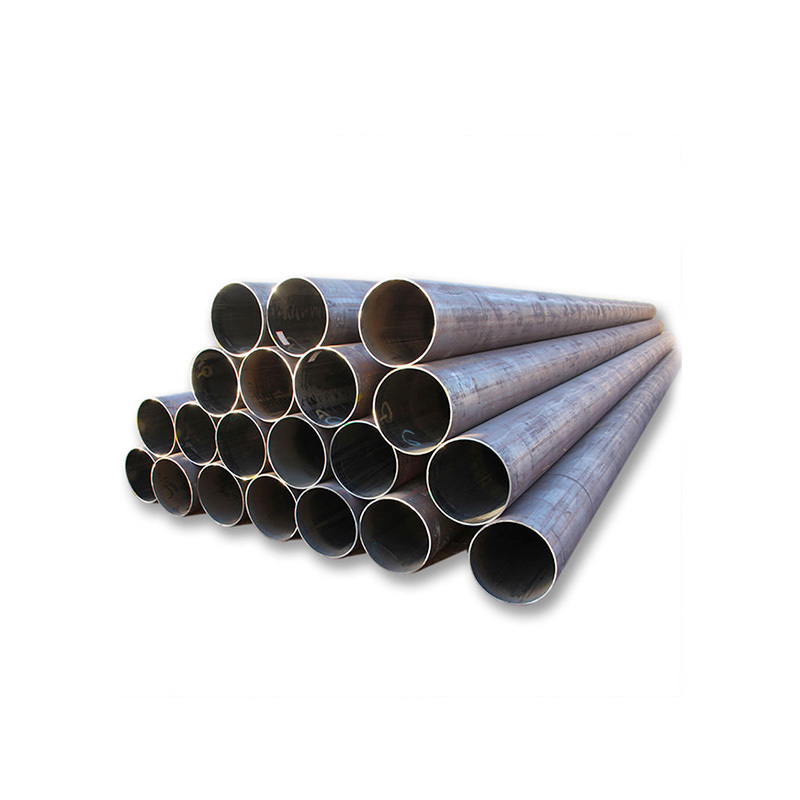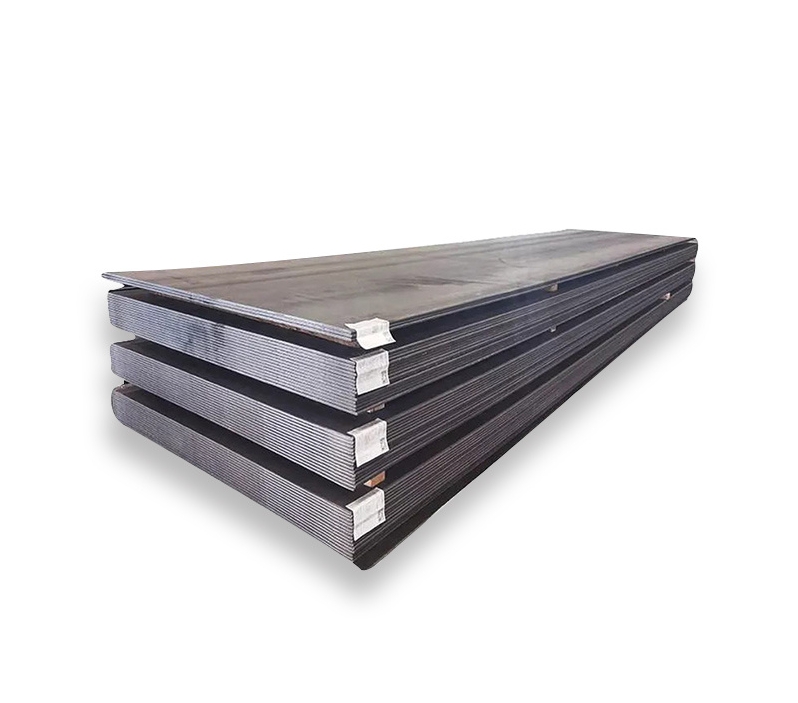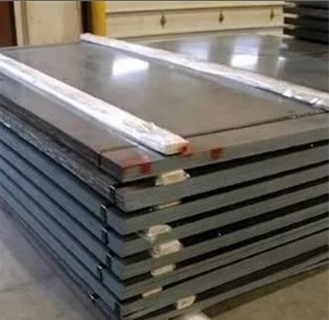K9 ductile iron pipe remains a cost-effective, high-durability choice for municipal water and industrial networks in 2025; typical factory (FOB China) price ranges for standard cement-lined K9 DI pipe are roughly USD 500–950 per tonne, while regional retail/installed costs vary widely by diameter, coatings, and logistics — from about $3–$12 per linear foot for small sizes in factory supply scenarios to higher installed costs in developed markets. Price drivers in 2025 are dominated by raw-material iron/steel scrap costs, energy and furnace efficiency, lining/coating choice, and shipping/lead time pressures.
what “K9” means
“K-classes” (K7, K8, K9, etc.) are thickness/strength designations used historically and in several standards to group ductile-iron pipe wall thicknesses and their intended pressure/surge capacities. K9 is a heavier/thicker class than K7/K8 and is chosen where higher hoop strength or greater external load resistance is required (larger diameters, higher working pressure or deep burial).
Which standards define K9 pipes
The most relevant published standards and normative documents for K9 ductile iron pipe are:
-
ISO 2531 and EN 545 / EN 598 — dimensional, material and joint requirements for water and sewer applications.
-
National standards such as IS 8329 (India) reference K-class designations and thickness series.
-
Manufacturer catalogs and third-party user guides (e.g., utility engineering PDFs) summarize pressure/thickness equivalence tables used for procurement.
Because normative documents evolve, always order or reference the latest edition of EN/ISO standards when specifying K9 for a project.
Metallurgy & minimum mechanical requirements
We expect K9 grade ductile iron pipes to meet typical ductile cast iron chemistry and mechanicals: tensile strength ≥ ~420 MPa and yield (proof) strength ~300 MPa, with nodular graphite microstructure for toughness and elongation. These mechanicals are enforced by EN/ISO test methods (tensile, hardness, impact where applicable) and by casting control (graphitization, nodularity, inoculation).

Dimensions, pressure classes and how K9 maps to PN/C classes
-
K-class is a thickness class; manufacturers often provide equivalent PN (pressure nominal) or C-class tables (C25, C30, C40) so designers can choose the correct wall thickness for hydraulic and external load requirements.
-
Standard nominal diameters run from DN80 → DN2600 for K9 in ISO/EN product ranges. Wall thickness and weight per meter increase with DN and K class; this is why per-meter price varies significantly by diameter.
Internal linings, external coatings and price effects
Common configurations for water services include:
-
Cement-mortar lining (centrifugally applied) — standard for potable water, adds modest cost but is almost always mandatory for EN/ISO water applications.
-
Epoxy or polymer inner coatings — higher cost, used for aggressive waters or to minimize head-loss.
-
External coatings: zinc + bitumen, zinc + epoxy, or polyethylene sleeves — selection changes the unit price significantly (polyethylene wrapping and high-thickness epoxy add to per-meter cost). Chinese factory quotes usually distinguish “bare + cement”, “zinc+bitumen + cement”, or “internal epoxy + external PE”.
Manufacturing & QA that impact price
Factors that make one K9 quote higher than another:
-
Melting & treatment controls (heat source, furnace efficiency, inoculation practice)
-
Casting method (centrifugal vs. static) and dimensional tolerances
-
Inspection: radiography, machinability of spigot/socket, pressure testing per ISO 2531 / ISO 1167
-
Gasket type (EPDM, NBR, SBR) supplied as standard or upgraded
-
Traceability & certifications (mill certificates, third-party inspection such as BV/SGS) increase price but de-risk procurement.
How price is quoted and how to compare offers
Suppliers typically quote in one of three forms:
-
USD / tonne (FOB) — common for export from China; requires conversion to length/weight for a per-meter or per-foot comparison.
-
Local currency / meter — common in domestic markets (India retail lists commonly show INR per meter).
-
Installed cost per linear foot/metre — includes fitting, bedding, excavation (typical of contractor bids in USA/EU). To compare, convert ton→meter using manufacturer weight tables for each DN.
We always ask for the same scope when comparing: same DN, same K class (K9), same lining/coating, same joint type, same packing and same Incoterms.
Weight & conversion worked example (how we convert a ton-quote to $/meter)
Manufacturers publish weight per metre for each DN and class. Example (illustrative numbers):
-
Suppose supplier quotes USD 700 / tonne (FOB Qingdao) for K9 cement-lined DI pipe. If DN200 K9 pipe weighs ~60 kg/m, then:
-
1 tonne = 1,000 kg → 1,000 / 60 ≈ 16.67 metres per tonne.
-
USD 700 per tonne → USD 700 / 16.67 ≈ USD 42 / metre (factory, FOB).
-
USD 42/m ≈ USD 12.8 / ft (because 1 m ≈ 3.2808 ft).
This shows why diameter matters: larger DN → more kg/m → lower metres per tonne → higher USD/m for same USD/tonne.
-
Global price comparison (representative ranges in 2025)
Notes on methodology: the table below synthesizes vendor FOB offers, manufacturer catalogs and regional retail lists active in 2024–2025. These are market ranges rather than firm offers; final negotiated prices depend on volume, logistic terms, and technical options. Sources used: multiple manufacturer listings and price pages (China factory quotes on B2B marketplaces, India retail per-meter lists, U.S. municipal bids and domestic fabricator price lists).
Global price comparison — indicative (2025)
| Region | Typical supply form | Typical range (factory/supply) | Notes |
|---|---|---|---|
| China (export, FOB) | USD / tonne — standard cement-lined K9 | USD 500 – 950 / tonne | Many factory listings cluster USD 600–900/ton depending on DN, coating. Volume discounts available. |
| India (domestic retail) | INR / metre (K9 cement lined) | INR 800 – 3,500 / m (≈ USD 9 – 40 / m) | Smaller diameters lower end; larger DNs and K9 thickness push price upward. Municipal tenders show per-metre pricing. |
| Europe (EU OEM / distributor) | EUR / metre, or EUR / tonne (ex works) | EUR 550 – 1,200 / tonne (installed costs higher) | EN/ISO certified stock and testing add to unit cost; coatings/PE sleeves are common upgrades. |
| USA (domestic manufactured /Fabricators) | USD / linear foot (material only) | USD 3 – 12 / ft (material only, small sizes) | Installed municipal bids for DI mains often show much higher all-in figures; US production has different supply chain cost structure. |
| Middle East / GCC | USD / tonne (import heavy) | USD 650 – 1,100 / tonne | Shipping and import duties add to landed cost; PE coating and special linings increase price. Source: regional importers and China FOB links. |
How to read this table: treat these as working ranges for budgetary estimates. For an exact project budget we always convert the supplier’s quoted USD/tonne (or INR/m) into the required metres, add freight, customs, inland haul and local handling, then add installation and testing contingencies.
Procurement & logistics: practical tips that save money
-
Bulk buying lowers per-tonne price: many Chinese sellers show lower USD/tonne for 50–100+ tonne lots.
-
Specify exact coatings and gaskets to avoid post-order change orders that raise price.
-
Ask for mill test certificates and third-party inspection scope — it may add 1–3% cost but avoids rework.
-
Include packing & containerization method (bundle vs. bulk) in RFQ; shipping density can change freight cost dramatically.
Installation, joints and field cost drivers
K-class choice affects not just pipe material price but installation cost:
-
Heavier K9 pipe is more robust but needs heavier handling equipment and possibly deeper bedding, which raises field labour and machinery costs.
-
Joint type (push-on flexible, restrained/T-type, flanged) alters installation speed and need for restraint accessories; restrained joints raise material and fitting costs.
Lifecycle, maintenance and total cost of ownership
We always counsel buyers to evaluate TCO (total cost of ownership) not just unit price. K9’s thicker walls provide greater resilience to external loads and longer service life in aggressive soils provided external protection is adequate. Ductile iron’s high recycled content and predictable failure modes often make DI a lower-lifecycle-cost choice for trunk mains compared to some plastics in heavy-load or high-temperature installations.
Luokaiwei purchasing checklist (what we include in RFQ)
When we prepare quotes for clients we include:
-
Exact DN, K9 class and length per piece.
-
Joint type and gasket material (EPDM/SBR/NBR).
-
Internal lining (cement mortar thickness or epoxy spec).
-
External coating (zinc thickness + bitumen or PE sleeve).
-
Packing, containerization, port of loading, Incoterms (FOB/CIF).
-
Mill certificates, third-party inspection plan and test protocol (pressure test/UT/radiography if required).
-
Delivery lead time and warranty terms.
FAQs
Q1. Is K9 always better than K7?
No. K9 is thicker and stronger but heavier; for many buried potable mains K7 or K8 is sufficient and yields lower installed cost. Choose K-class to match external loads and pressure, not by default.
Q2. How do I convert a Chinese FOB price (USD/tonne) to a per-metre price?
Use the manufacturer’s weight (kg/m) table for the specific DN and K class: metres per tonne = 1,000 / (kg/m). Then divide FOB USD/tonne by metres per tonne → USD/m. Example and worked method shown earlier.
Q3. Which internal lining should I pick for potable water?
Cement-mortar lining is the common baseline per EN/ISO for potable water; choose epoxy or polymer linings for aggressive chemistry or where reduced head loss is required.
Q4. Can DI pipes be used for sewage and wastewater?
Yes — EN 598 covers sewerage applications; material and lining options differ from potable water standards. Always reference the correct standard in the specification.
Q5. How do coatings affect warranty and lifecycle?
Upgraded coatings (thicker zinc, epoxy, PE sleeves) extend protection in aggressive soils and often come with longer warranty periods; they increase upfront price but can lower maintenance and replacement costs over decades.
Official references
- Ductile iron pipe — Wikipedia
- Ductile Iron Pipe Cost Per Linear Foot
- IS 8329: Centrifugally Cast (Spun) Ductile Iron Pressure Pipes — Bureau of Indian Standards (PDF)
- DIPRA: 2025 industry outlook for ductile iron (article)








